Advantages of broiler cage equipment
The use of broiler cage equipment is common in many large and medium-sized chicken farms. Except for some farms that are used to free-range, most chicken farms choose to use broiler cage equipment as a device for raising chickens. The broiler cage manufacturers said that the use of broiler cage equipment can collect and manage chickens, save energy, and effectively reduce the incidence of poultry diseases. Let's talk about the advantages of broiler cage equipment.
1. High degree of automation: automatic feeding, drinking water, clearing dung, wet curtain cooling, centralized management, automatic control, saving energy, improving labor productivity, reducing the cost of artificial breeding, and greatly improving the breeding efficiency of farmers.
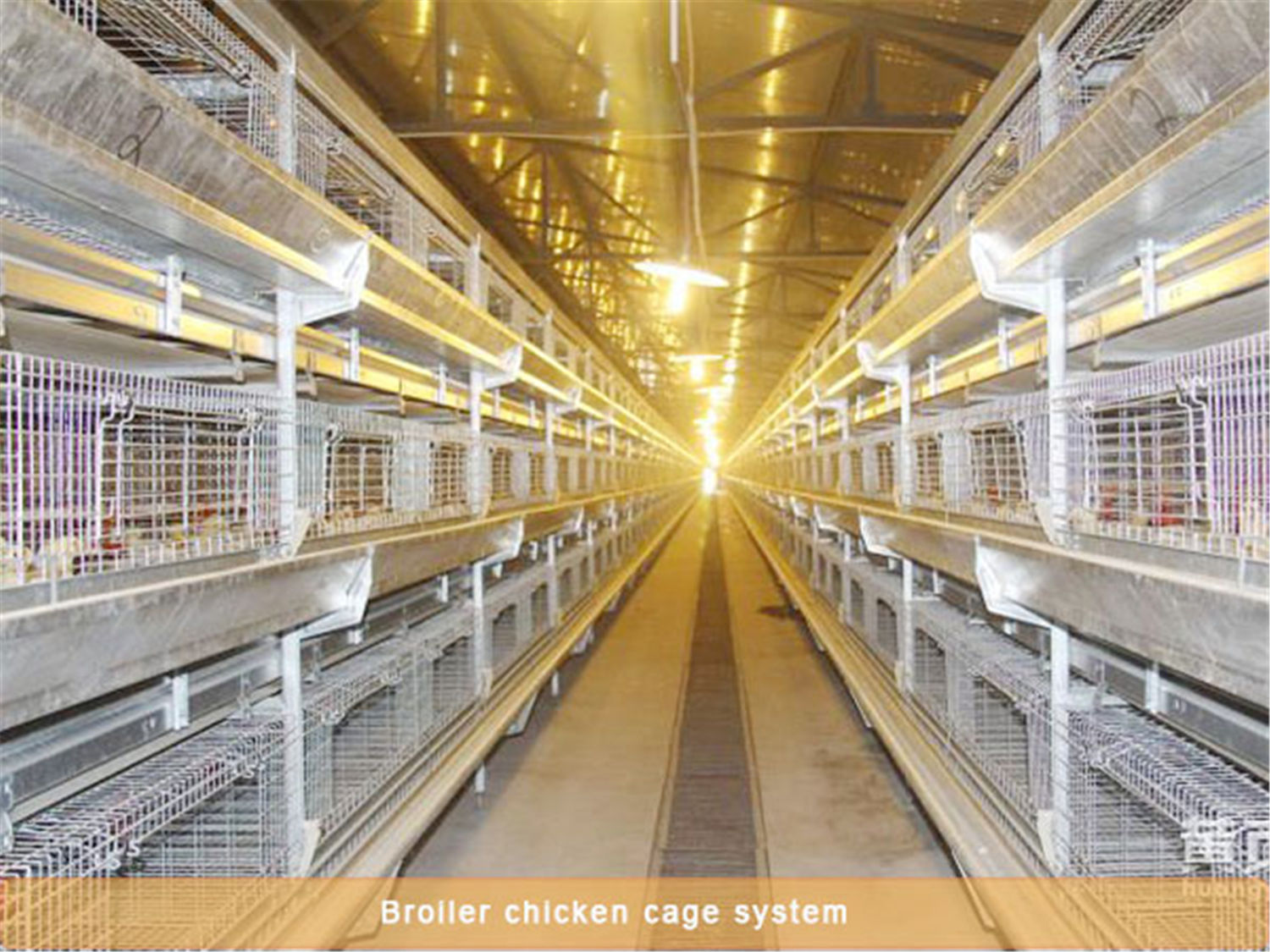
2. The flock is well-prevented and effective in preventing infectious diseases: chickens do not touch the feces, which can make the chickens grow healthier and provide a clean and comfortable growing environment for the chickens.
3. Save space and increase stocking density: The cage density is more than 3 times higher than the flattening density.
4. Saving farmed feed: caged chickens can save a large amount of farmed feed, chickens are kept in cages, the amount of exercise is reduced, energy consumption is small, and waste materials are reduced. The data show that cage farming can effectively save more than 25% of farming costs.
5. Rugged and durable: The caged broiler complete set of equipment uses hot dip galvanizing process, corrosion resistance, aging resistance, and the service life can be as long as 15~20 years.
Suitable Humidity and Temperature for Raising Chickens
Humidity is closely related to evaporation of water in the chicken body when they are raised in poultry equipment cages, body heat emission and cleanliness of the house are very important.
When the temperature is high and low humidity, the water in the chicken is not dispersed too much, which may lead to dehydration of the chicks. In addition, due to drying, the dust inside the house is flying, and it is easy to induce respiratory diseases.When the temperature is low and high humidity, the house is cold and humid, and the chick is prone to cold, causing the litter to be wet, and the gastrointestinal disease occur. In general,when the temperature is high and high humidity, the heat in the chicks is not easy to be emitted normally, suffocating, appetite is falling, growth is slow, and resistance is weakened.
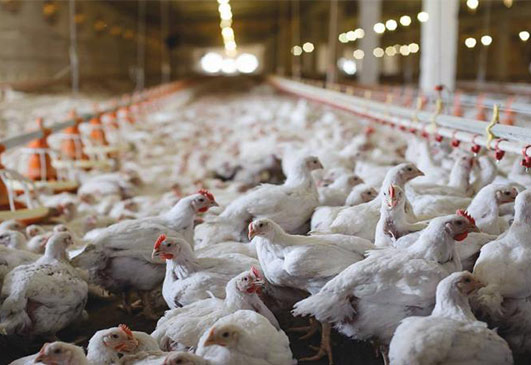
The laying house of the laying hens should be kept dry to prevent bacterial growth and infection, but the relative humidity should not be lower than 40%. Suitable relative humidity is 60% -65% before 10 days old and 50%-60% after 10 days old in your poultry farm equipment house.
Why buy high-quality broiler cage equipment?
Broiler cage equipment and caged chicken equipment are directly related to the efficiency of the farmers. Many chicken farmers' brooding, rearing and layer houses are out of proportion. And they do not meet the requirements. The rearing area is often too small, the rearing density is too large, and the feed and drinking troughs are not enough. It can be said that this is a common problem common to chicken farmers, and it is also one of the important factors affecting the economic benefits of laying hens. There are also chicken farmers who raise more chickens, use fewer houses or have no extra houses for chickens. Putting the chicks into cages prematurely is unfavorable to the growth and development of the young and will eventually affect the laying performance of the hens. For laying hens, the harvest is after the hens start to produce.
The equipment for raising chickens is inferior and mismatched. The equipment for raising chicks, brooding chickens and laying hens has specifications and ratio requirements. The equipment should be matched to facilitate the normal growth and development of the chicken group and reasonable turnover, and give full play to the utilization and operation rate of the equipment, so that the depreciation expenses allocated to each hen or each kilogram of eggs can be more reasonable, thereby reducing Cost of production.
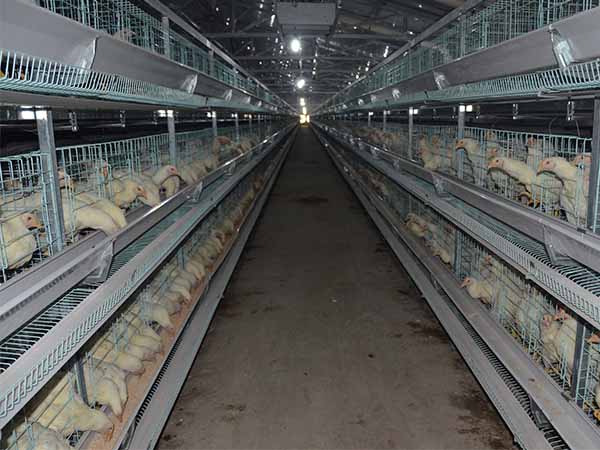
Nowadays, laying hens are mostly raised in cages, and chicken cages are indispensable equipment, and chicken farmers generally pay more attention to it. However, they lack the ability to discern the quality of chicken coops, and tend to be low-priced when they are purchased. Cage is a place for hens to live, produce and sleep. Its quality cannot be ignored. The quality of the bottom of the cage, the width and slope of the cage are especially important. Another common problem worth noting is that chickens are not installed in cages. When the brood survival rate is high, the number of surviving hens exceeds the budgeted transfer number, or the hens that are too light are reluctant to eliminate hens that are too light. In this case, they are often overloaded. According to statistics, when the number of hens per cage increased to 5, 22.5% of the hens died before 305 days of age. According to the production report statistics accumulated by the author over the years, the egg production rate of chicken flocks whose cage density exceeds the prescribed standard is 5% to 15% lower than that of normal chicken flocks.
Therefore, the purchase agency can not only talk about cheapness, but needs to consider quality first
Analysis of the causes of chicken cold
Cooling is one of the main causes of chicken sickness. There are many cold spots. It is not only the temperature control level or the ventilation of the chickens, but the factors that can cause the chickens to be cold are as follows.
1. During the brooding, the water line is too low, the water pressure is too large, the chicks are drilled into the water cup, the nipple leaks, causing the chicken feathers to be wet; the spray equipment is damaged, the nozzle dripping seriously or the spraying time is long, causing the chicken feathers to be wet.
2. Improper humidification method, only pay attention to humidification, does not consider the temperature of the flock, when the flock performance temperature is low, humidification with a humidifying tube will make the flock cold.
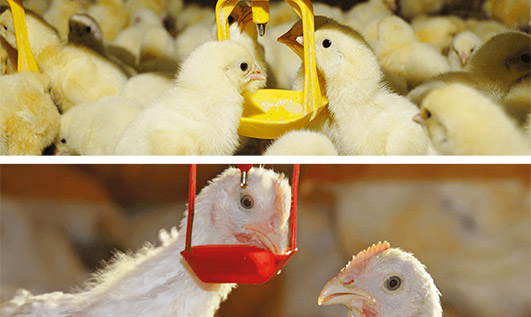
3. The chicken house is not tightly sealed, causing side windows, sewage outlets, chicken outlets, water curtains, exhaust fan outlets, etc., resulting in thief winds, so that the chickens in this area are cold due to low temperatures.
4. After the wind enters the chicken poultry farming equipment from the air inlet, there are obstacles blocking during the pre-warming process, causing the breeze to rebound, and the chickens are swollen.
5. The temperature control is unreasonable; the cooling rate is faster, especially in the cold season, which makes the chicken's cold is more common.
6. Only rely on the temperature indicated by the thermometer, but the chicken's physiological behavior is not taken seriously, resulting in the chickens being cold.
Problems to be overcome in using broiler cage equipment to raise chickens
The use of broiler chicken cage equipment is the development trend of broiler breeding. More and more chicken farmers have begun to try to adopt the mode of broiler cage breeding, which is currently one of the advanced production methods in the broiler breeding industry. It has the advantages of saving land resources, improving breeding conditions, improving production performance, and reducing disease incidence. However, in order to achieve greater economic benefits, it is necessary to overcome its existing problems and maximize the benefits of broiler cages.
The main technical characteristics of broiler cages are as follows: First, the three-layer overlapping cage technology is adopted. The second is to be equipped with an automatic manure removal conveyor belt to clean manure in time and reduce harmful gases such as ammonia and sulfur dioxide in the house. The third is that the entire cage is made of hot-dip galvanized metal anticorrosive materials, and the bottom of the cage is covered with wear-resistant and corrosion-resistant plastic nets, which can effectively reduce the incidence of breast cysts and leg diseases in broilers. Fourth, the chicken house is fully enclosed, relying on air intakes and exhaust fans on both sides of the house to maintain air quality in the house. The staggered installation of incandescent lamps reasonably realizes artificial lighting, and the use of water heaters, wet curtains, and automatic spray devices to achieve temperature and humidity control in the house.
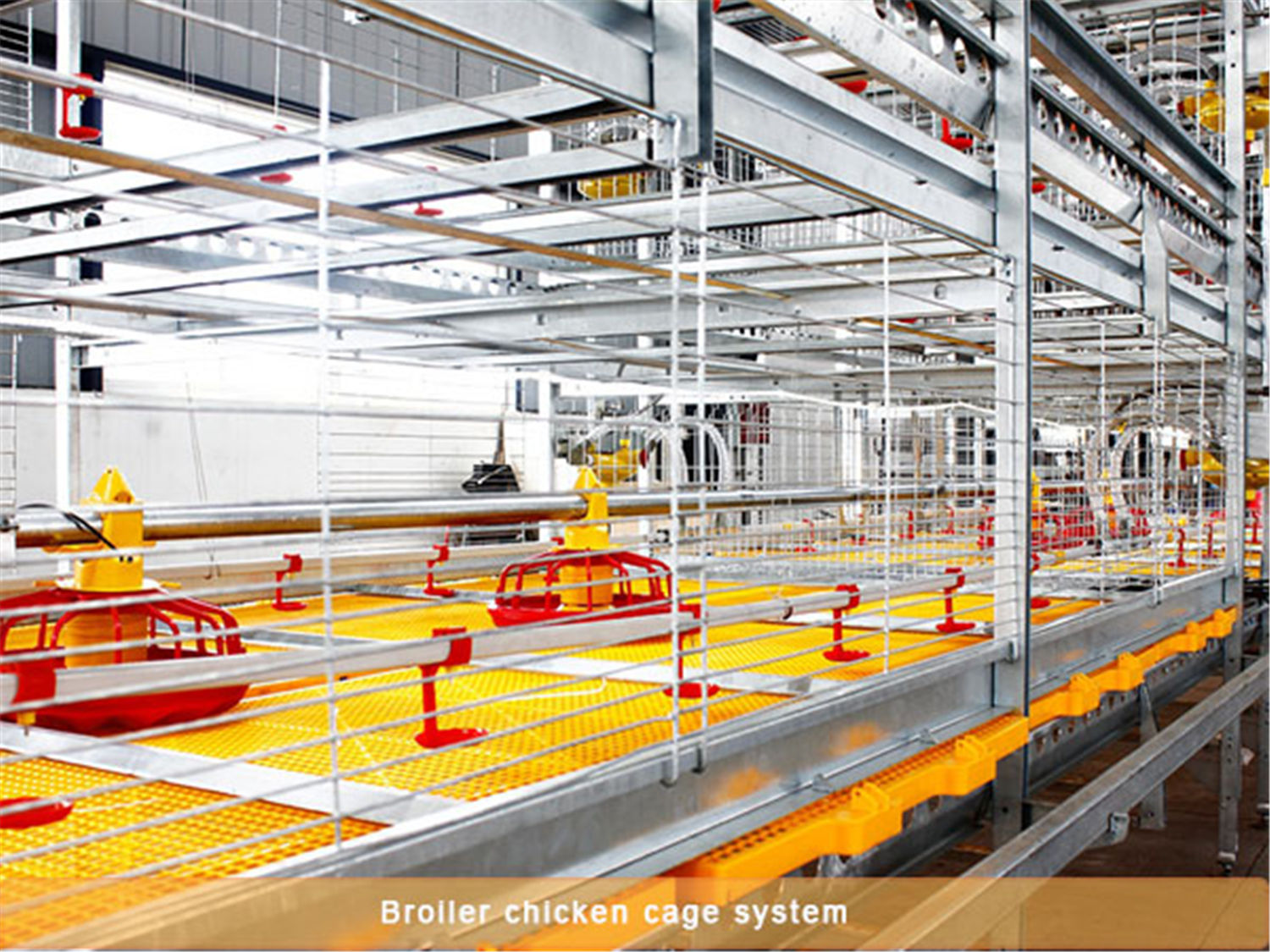
Experiments show that the technical advantages of commercial broiler cages over online breeding are very significant. Not only can increase the number of breeding, improve production performance, save production costs, and bring significant economic benefits to farmers. It can also save land resources, reduce environmental pollution, improve product quality, and create huge social benefits. In line with the development requirements of "scale, standardization, industrialization, and ecologicalization" of the broiler breeding industry, the widespread promotion and application will help accelerate the process of standardization and transformation of livestock and poultry farms, and effectively promote the upgrading of the livestock industry.
Although cage breeding has significant technical advantages over online breeding, there are still some problems with cage breeding technology, mainly in the following three aspects. One is that the initial investment of cage culture is larger than that of online culture, but because the profit rate of cage culture is much higher than that of online culture, the return is quick. Second, the technical requirements of cage breeding are higher than that of online breeding. Because cage houses are closed and fully automated, technicians must not only master breeding management techniques, but also be familiar with the operation of modern equipment. Third, the ventilation requirements of cage breeding are higher than that of online breeding. Because cage breeding is multi-layer breeding, it is more dense than online breeding, which easily causes poor air circulation in the house. Therefore, the above three points are the problems that farmers who use broiler farming cage equipment to overcome.
Factors affecting the water requirement of chickens when using broiler cages
① Production performance: The higher the production level, the greater the water requirement of the chicken. For example, adult chickens drink more water than chicks; among chickens of the same weight, young chickens develop water deficiency faster than adult chickens; laying hens drink more water than non-laying hens.
② Feed structure: Some feeds such as rye, bran and certain minerals such as table salt can cause chicken loose stools, so the water requirement increases. Excessive protein levels in the diet can increase drinking water. Because too much nitrogen in the chicken must be excreted from the kidney, and the chicken has the worst concentration of urine, it is necessary to increase the drainage to excrete more nitrogen, thereby increasing the water requirement. The increase of crude fiber content in the feed and the increase in the amount of feces in the chicken also increase the water requirement.
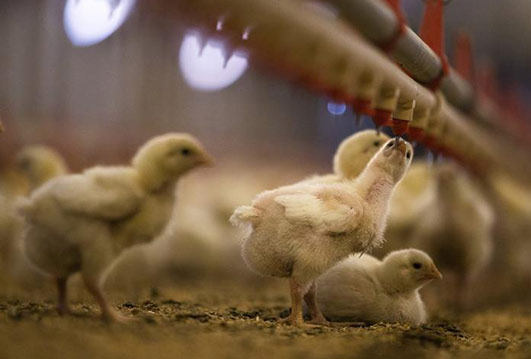
③ Ambient temperature: Under the production conditions of broiler cages, due to changes in the ambient temperature, the amount of water consumed by the chicken has changed significantly. High temperature (above 30℃) usually increases the amount of drinking water. When the ambient temperature increases by 1°C, the amount of drinking water can increase by about 7%; when the temperature is low (below 10°C or less), the amount of drinking water decreases. When the temperature of laying hens is increased from below 10℃ to above 30℃, the drinking water volume can be doubled. In addition, the temperature of drinking water can more affect the amount of water consumed by chickens. Chickens like to drink cold water instead of drinking water above ambient temperature, and refuse to drink water above 45℃.
④Water quality: When using broiler cages to raise chickens, chickens have strict requirements on water quality. There are fewer impurities in the water, and the pH is between 6.0-8.5. If there are more impurities in the water, especially when the water contains more soluble minerals, it will cause the chicken's palatability to the water to be reduced, thereby reducing the amount of drinking water. In addition, the use of certain drugs in water can also reduce the amount of water consumed by chickens. Therefore, chickens should be given fresh, cool and clean drinking water.
What is the Most Important Thing When You Raise Broilers?
In early spring, it is easy to bring discomfort to the chickens in the broiler farms. At this time, the farmers must pay special attention to the rearing and management of the chickens in the broiler farms, and master the necessary broiler breeding techniques to achieve the guarantee of broiler farms. The healthy development of the broilers can lead you a bright feature.
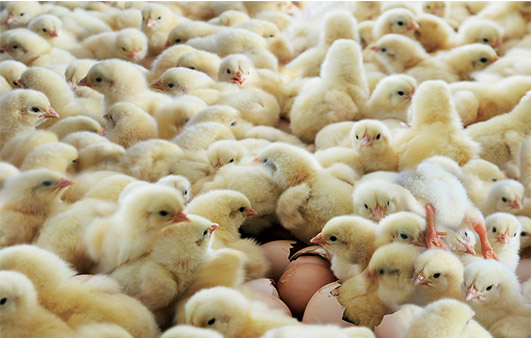
The chickens should ensure that they can drink water within 2 hours after entering the house. For some weak seedlings, artificial drinking can be used to make them drink water. The purpose is to let the chicks learn to drink as soon as possible. The first time the chicks use water at 25°C, add 5% dextrose and 0.1% vitamin C to the water. The waterer should be washed frequently. During the entire brooding period, the drinking water should not be interrupted. From the second day of the brooding, the drinking water should be added. drug.
Do you Know What’s the new Concept of Broiler Rearing Management?
With the progress of the times and the development of science and technology, the genetic breeding technology of broilers has been greatly improved, and the nutritional formulation of chicken feed has also undergone new changes. Broiler breeds are constantly being optimized, and the feeding and management viewpoints of broiler chickens are no longer practical. The broiler breeders at this time need to understand some new ideas for the early feeding and management of broilers.
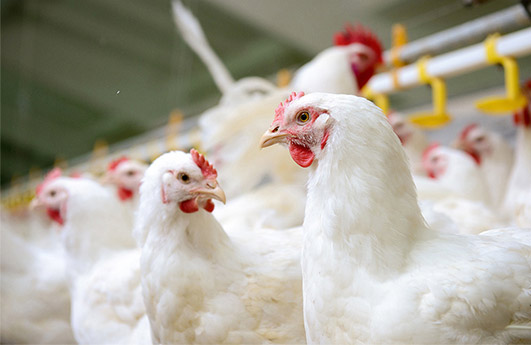
Do a good job of early feeding chicks, so that the chicks get even and good development in the first week. Changing the way that chickens were fed before drinking water for a period of time before they were fed will become better when the chicks arrive. Change the practice of distributing drinking fountains according to the number of chickens in the past, and increase the number of drinking fountains accordingly so that the chicks can easily find the water in the column after entering the house. If the chicks do not use the trays within the first day of arrival, use clean plastic cloths on the net or spread clean and hard papers to spread the material on the chicks for feeding. The effect is much better than using the trays alone.
More...
Precautions for purchasing broiler cages in Nigeria
Many farmers are purchasing broiler cages. Pay attention to some purchase matters.
First of all, we must know the distance between the iron bars of the broiler cage. This is very important for broiler cages. A reasonable spacing is 2.5cm*5cm. Some farmers may think that the size of the broiler chickens is relatively large, and the spacing can be increased. This idea is wrong. Conditional farmers can also lay a plastic net on the bottom of the broiler cage that is consistent with the cage eye. This can not only buffer the strength of the eggs hitting the net and reduce the rate of broken eggs, but also prevent some diseases.
The design angle of the bottom of the broiler cage. The angle of the broiler cage must be accurate. The egg cannot be rolled out in time at a small angle, and it is trampled by the chicken. A large angle may cause the egg to break, and the general angle is maintained at seven to eight degrees.

Pay attention to the connection between the broiler cage and the bottom of the cage net. I must remind you that there are farmers, and you can't leave a big gap here. Because there are more eggs here. You must pay attention to this detail when buying a broiler cage.
The choice of materials for the chicken cage is very particular. It is necessary to choose suitable and tough materials. The diameter of the iron wire at the bottom of the cage is about 2 mm. The egg breaking rate is very small. The larger the diameter of the iron wire, the easier it is to cause broken eggs.
Due to the high density of broiler cages, it is not conducive to observe the situation in the flock. Especially in the brooding period, it is more obvious, so it is necessary to carefully observe the cage around the cage carefully. Prevent the abnormal situation in the flock from being discovered and dealt with in time. When the chicks are just transferred to the rearing cage. Due to the new environment, the chickens will be temporarily uneasy. The chickens that ran out of the cage should be caught in the cage in time, and the chickens should be carefully checked for damage and whether all the chickens can drink water in time.
In addition, in daily management, we should carefully observe the chickens every time, and be well aware of the chickens’ feeding, drinking, feces, mental state, etc., timely prevent diseases, strengthen management, and reduce economic losses.These are the precautions for purchasing broiler cages in Nigeria
Advantages and Disadvantages of Broiler Ground Thick-bed Feeding Slat
The broiler ground thick litter feeding refers to feeding 5-10 centimeters of litter on the ground of a strictly sterilized chicken house, and the entire period of growth of the chicken is fully maintained on the litter. The litter requires soft, dry, strong water absorption, is not easy to compact, does not mold, no pollution. During the rearing process, loosening of padding material, removal of wet litter, and addition of new litter should be made as appropriate.
Advantages: Suitable for broiler growth and development, slightly lower than the Internet temperature during the hot season. Usually do not remove the feces, do not change the litter, save time and labor; in the winter can use litter fermentation heat production and increase Shewen; chicks in the litter activity increased, reduced the incidence of earthworms. Easy to use, low equipment investment, low incidence of breast cysts, and low defective products.
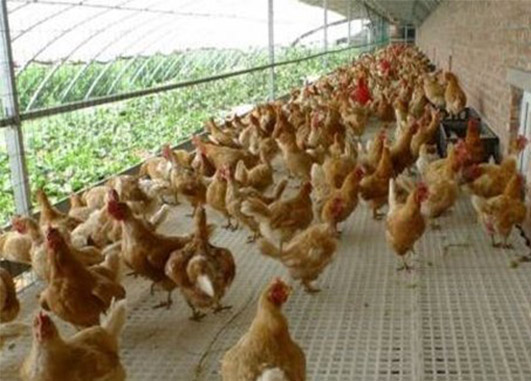
Disadvantages: It requires a lot of litter, repeated investment. The management of litter is difficult. If the management is not good and the litter is wet, various diseases of the digestive tract and respiratory tract infections are prone to occur: such as E. coli, coccidiosis, and chronic respiratory diseases. Direct contact between chickens and feces, the incidence of coccidiosis increased, and other infectious diseases are prevalent. The contradiction between ventilation and heat preservation is prominent, and health management is difficult. Chicken manure use value is reduced.
